How to lay turf
Making a new lawn from turf produces an instantly attractive result and can be done from autumn to early spring, in suitable weather. Here we explain how to choose turf, prepare the soil, then lay your new lawn.
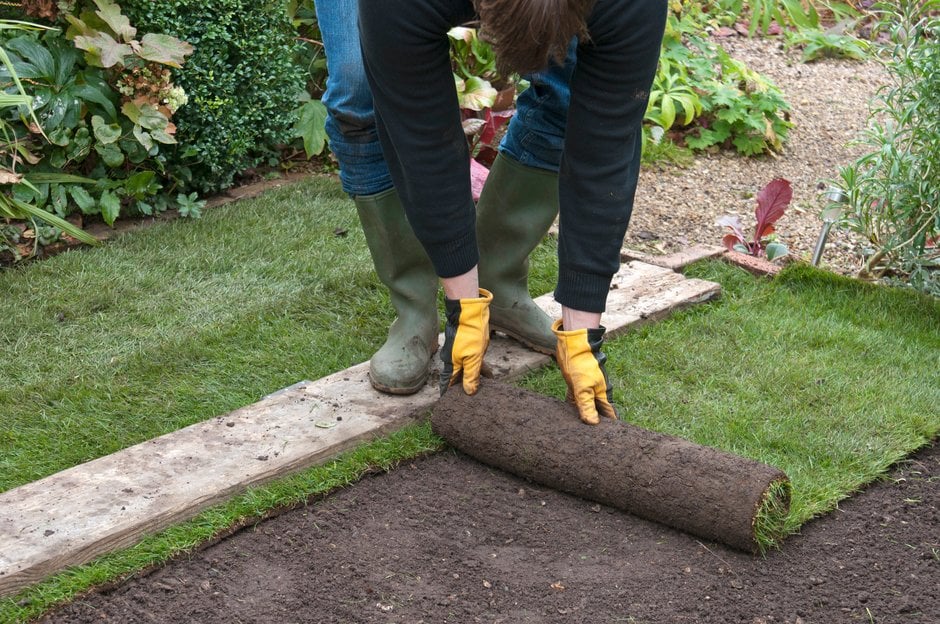
Quick facts
Difficulty: Easy
Jump to
Why use turf?
Laying turf is a quick way to get an instant lawn. It’s good for situations where you can’t stay off the lawn for long or need a usable lawn quickly. So if you have children or pets, it’s often a good option, as you can use a lawn a few weeks after it has been laid.
Although laying turf is a quick way to achieve lawn cover, soil preparation beforehand is just as important as for sowing lawn seed. Turf is also more expensive than seed and you need to lay it within a few days of delivery, so time is of the essence.
When to lay turf
Turf is best laid in mid-autumn, but can be laid any time between mid-autumn and early spring, whenever the soil isn’t too wet or frosty. In spring and autumn little mowing is needed, so newly laid turf can be left relatively undisturbed for several weeks, which will help it get rooted in.
Bear in mind that turf laid in early spring often needs additional watering during dry spells over summer. Both dry conditions and mowing before the new turf is fully rooted will stress the grass plants and delay rooting.
Avoid laying turf from mid-spring to early autumn, as it would struggle to establish during hot weather and would need repeated watering. This could be expensive if you're on a meter and isn’t an ideal use for this increasingly scarce resource – see our tips on reducing water use in the garden.
Preparing the soil
Good soil preparation is the key to establishing a successful lawn. Pay particular attention to clearing weeds, loosening any compacted soil and levelling the ground.
Complete the site preparation before going to buy the turf or before it’s delivered.
-
First get rid of all perennial weeds, such as couch grass and bindweed, removing all the roots. You can do this by hand or use weedkiller, but don’t use residual weedkiller, as it can remain in the soil and prevent the turf from establishing. Alternatively, you could cover the area with cardboard or weed membrane, but this will take much longer – see our guide to clearing weeds without chemicals
-
Dig or rotovate the soil to a depth of 20–25cm (8–10in), to ensure there is no compaction
-
Incorporate plenty of well-rotted manure or other organic matter, such as garden compost, to hold moisture in the soil, especially if you have sandy soil. Just make sure it’s well rotted, as undecomposed organic matter will shrink in volume and cause the soil surface to sink unevenly as it rots down
-
Leave the ground to settle for at least a few days – longer if possible, ideally five to six weeks or more
-
Remove any new weeds that have germinated. Hoe and/or dig them out, or you can use a contact weedkiller, but not a residual one
-
Firm and level the surface by treading the area several times in different directions using shuffling steps. Then rake several times too, also in different directions
- Finally, if you have light, poor soil, you can rake in a general purpose fertiliser, at the manufacturer's recommended rate, or approximately 35g per sq m (1oz per sq yd)
If your new area of lawn is on disturbed soil, such as an old flower bed, bear in mind that the ground will settle over time and the surface level may drop a little. If you want to match it to an adjacent lawn, make the surface a little higher to allow for this, otherwise you may find a hollow develops.
For advice on removing weeds from the site, see our handy guides:
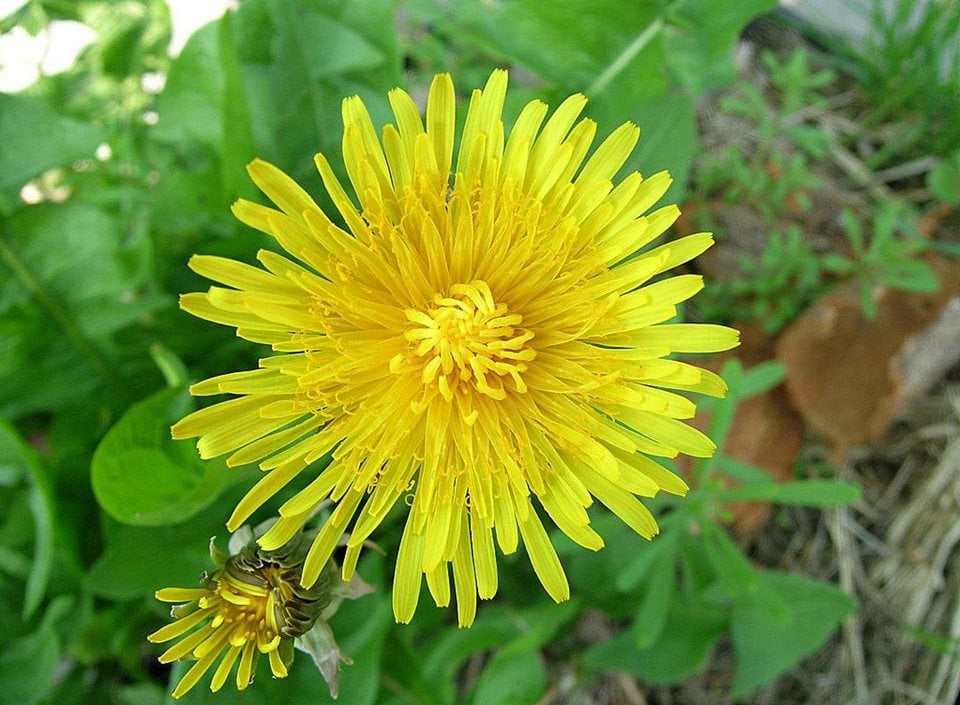
Identify common weeds
Lawn weeds: selecting weedkillers
Weeds: non-chemical control
Choosing and preparing the turf
Turf is mainly available from online suppliers, for delivery. Turf specialists offer a choice of grass mixes to suit different locations and uses, including shady areas, utility grass and high quality fine turf. You can also buy wildflower or meadow turf, with a mix of native wild plants already established.
Measure the area of your new lawn and check the dimensions of the turf pieces carefully before buying, to make sure you order enough.
Check the turf's condition and quality on arrival – it should be free of weeds and consistently rich green in colour. Turf can vary in thickness, but your delivery should all be the same. The pieces should all be the same width too, otherwise laying them without any gaps will be difficult.
Turf should be laid within 24 hours of delivery if possible. If laying is delayed for more than a few days, then unroll the turf and lie it out flat, so the grass is exposed to light, then water if dry. If you leave it rolled up, it will soon start to discolour and the grass will weaken.
Plastic netting in turf
Some turf producers grow their turf on a fine plastic mesh or net. This gives the turf additional strength and ensures it holds together in transit. It can, however, cause problems when carrying out lawn care tasks such as scarifying, and adds unnecessary plastic to the environment. So look for turf without plastic mesh – check with the supplier before buying. Wildflower turf is available grown on a plastic-free felt base.
Lifting turf
If you’re lifting turf yourself, use a spade or turfing iron and choose good quality grass without any weeds (unless you want wildflowers in your lawn). Cut it to a depth of about 2–5cm (¾–1in), then trim each piece to a regular size and depth – consistency is essential, otherwise it will be hard to make a level lawn with no gaps. To do this, place each newly cut turf piece upside down into a prepared wooden box of the required depth and dimensions, and slice off any excess soil.
Laying turf and aftercare
Once you’ve carefully prepared your soil, as outlined above, it’s time to lay your turf:
-
Begin at one side or one corner of the site and work across it, so you’re facing the bare soil
-
Avoid making footprints in the newly laid turf by standing on boards
-
Lay the pieces of turf so the joints are staggered, in a similar way to bricks in a wall, and push them together tightly so there are no gaps between them
-
Check that each piece of turf is level – keep a bucket of sandy soil at hand so you can easily add or remove soil if necessary
-
Once all the turf has been laid, firm it gently with a lightweight roller or home-made ‘tamper’ (a piece of flat wood attached at right angles to a broom handle)
-
Scatter a mix of sand and soil or garden compost onto the lawn and brush it into the joints. This top-dressing fills any small gaps and helps the turf knit together and get established more quickly
- Water well if no rain is forecast, then leave the turf undisturbed – the first few days are critical for root development
You can also watch our video guide to see how it’s done:
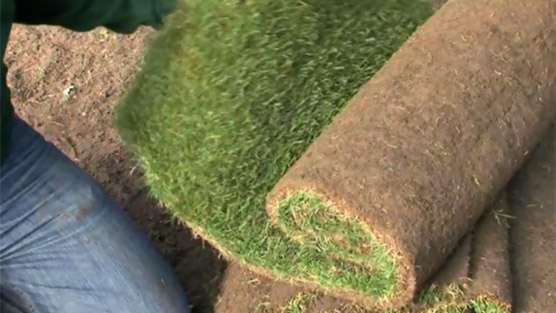
Laying a lawn from seed and turf
Looking after newly laid turf
- In dry weather, you may need to water regularly to keep the new turf constantly moist and ensure it roots in well. During dry periods in mid- to late summer, water every five to ten days. At other times, water during dry periods every fortnight
- Ensure enough water is added to soak down through the turf. Only wetting the upper layer of new turf can lead to shallow rooting and encourages coarser weed grasses such as annual meadow grass (Poa annua)
- Mow with the blades set high once the turf has rooted well, usually about three weeks after laying. Tug on the grass to check it doesn't lift easily – also see our guide to mowing
Problem solving
Laying turf is generally problem free, as long as the soil is prepared well and the turf is kept watered until it has rooted into the underlying soil.
If you have tricky growing conditions, such as a shady spot, buy turf that’s a specific mix of grass species suited to those conditions, otherwise the turf will struggle to get established and will be hard to keep in good condition.
Mow regularly if you want fine-quality turf, and carry out regular spring and autumn maintenance:

Autumn lawn care
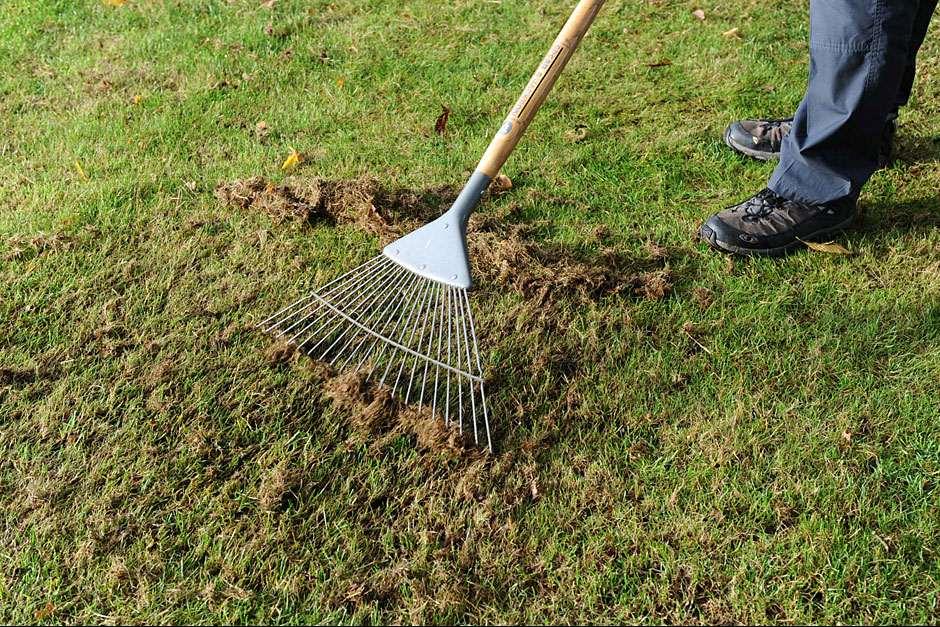
Lawn care in autumn
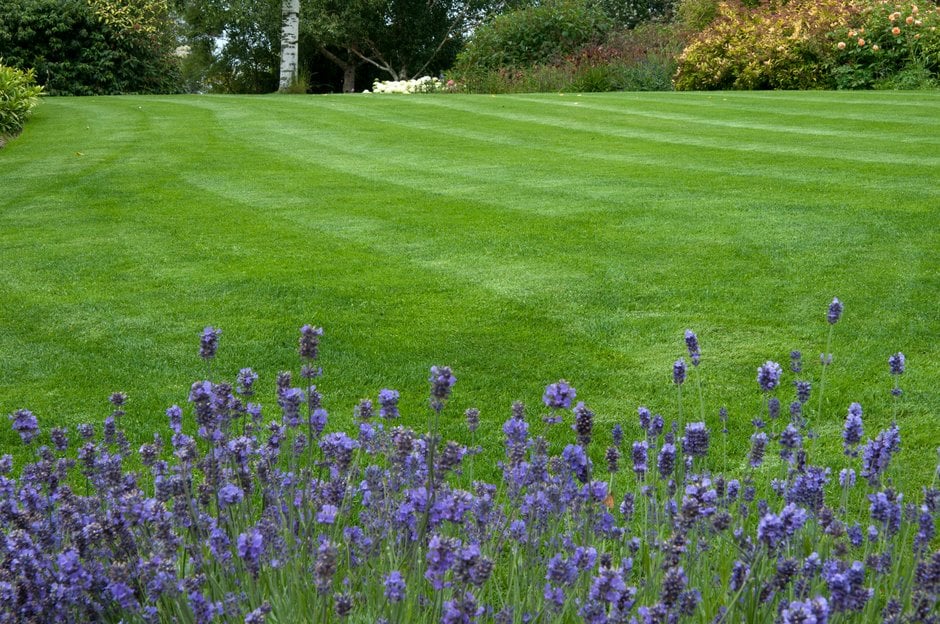
Lawn care in spring and summer
Get involved
The Royal Horticultural Society is the UK’s leading gardening charity. We aim to enrich everyone’s life through plants, and make the UK a greener and more beautiful place.